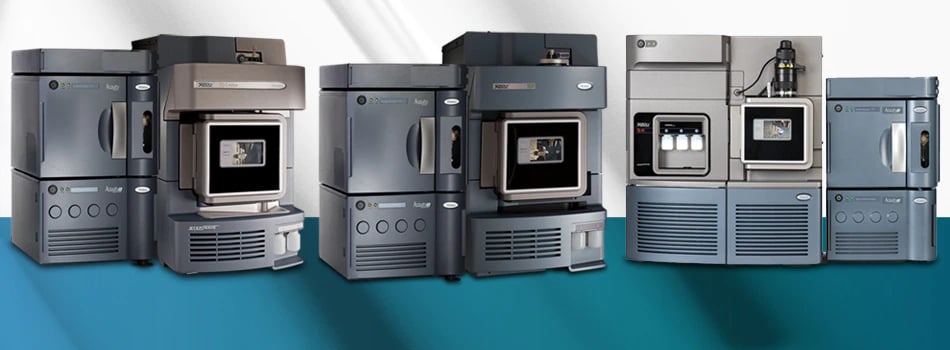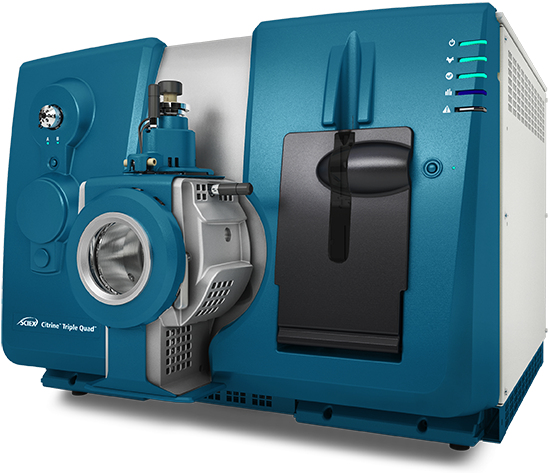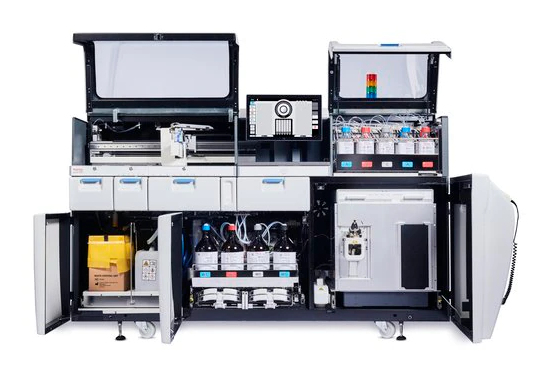Mass Spec in the Clinical Lab: Product Updates
New developments in mass spec-based diagnostics moves the field closer to clinical integration
What once was just a vision is now inching even closer to reality – widespread implementation of mass spectrometry in the clinical testing laboratory. Momentum has been building over the past decade. The advent of testing kits matched with instrumentation started with assays such as the FDA-cleared Vitamin D assay from SCIEX, introduced at ASMS in 2017. Since then, a number of testing kits have followed, receiving FDA-approval as In vitro diagnostics (IVDs). This growing acceptance has extended to sample processors, HPLC systems, mass spectrometers, and a number of other associated instruments as well, with applications including drug analysis, toxicology, endocrinology, and pathology.
What is an IVD?
In vitro diagnostics (IVDs) are tests performed on human samples including blood, urine, or tissue and are regulated by the federal drug administration (FDA). The FDA defines an IVD as reagents, instruments, or systems used for diagnosis of disease in human samples, and classes include Class I, II, and III based on the level of control necessary to ensure safety and effectiveness
- Class I – Low to moderate risk with a requirement for general controls
- Class II – Moderate to high risk; general and special controls
- Class III – High risk: general controls and Premarket Approval (PMA)
IVDs are defined in section 201(h) of the Federal Food, Drug, and Cosmetic Act, and generally subject to categorization according to the Clinical Laboratory Improvement Amendments (CLIA). As such, quality standards for laboratory testing and an accreditation program are necessary for CLIA certified IVDs to be run. The bar is high for mass spec testing technologies to achieve IVD approval for CLIA-approved use on human samples.
Waters has now increased their presence in the clinical space with the recent introduction of the MassTrak line of IVD systems for clinical diagnostics. Compliance, flexibility, and performance are central to the Waters mission of providing accurate and timely results for a range of clinical applications. Systems are configured to accommodate a variety of clinical testing applications.

- The pairing of the ACQUITY UPLC I-Class PLUS with XEVO TQD IVD system (shown at the center) enables routine quantitative LC-MS/MS applications in the clinical lab. This includes measurement of steroids, metabolites, and other clinically relevant small molecules for routine screening.tions.
- The ACQUITY UPLC I-Class PLUS with Xevo TQ-S micro IVD system (shown on the left) is designed for high-sensitivity and a wide dynamic range. Robust and reproducible performance enables the ability to detect very low quantities in complex sample backgrounds, with fast acquisition rates.
- The ACQUITY UPLC-I-Class PLUS with Xevo TQ-XS IVD system (shown on the right) is built to identify trace analytes in complex sample matrices.
- MassTrak components and accessories are offered to customize systems in accordance with IVD lab methods, applications, space requirements and other details. These include a Column Manager, Column Heater, Sample Organizer, Sample Manager needle-in-flow path injector, loop-based injector and other tools to accommodate sample versatility.
SCIEX continues to explore the mass spec-based clinical diagnostics space with the release of several IVD-approved kits and instruments. New offerings include the following:
The Citrine MS/MS IVD medical device (shown right) allows users to develop multi-analyte testing panels, with high-speed and sensitivity provided by QTRAP technology. Features include:
- Both Electrospray (ESI) and Atmospheric Pressure (APCI) ionization sources to accommodate diverse sample sources, non-polar and polar peptides, biomarkers, metabolites, and biological fluids
- Extended mass range to 2000 m/z to cover a wide range of analyte product masses
- Fast MRM scanning (1 ms dwell times) and fast polarity switching (5 msec) to explore large panels of compound classes
- Sensitivity and resolution to detect trace level (sub-pg/mL) analyte concentrations
The system has been applied in validated workflows for the measurement of steroids, drug compounds in urine, and water and fat-soluble vitamins, among others.
The 4500 MD LC-MS/MS is a triple quadrupole designed to provide quantitative and qualitative analysis on a single system. Features include:
- An integrated syringe pump to allow infusion of standards for calibration and quantitative measurements using specified flow rates.
- Switchable ESI and APCI ionization probes that can operate at high temperature and support flow rates ranging from 50 µL/min up to 3 mL/min
- Software and automation features to support routine clinical diagnostic compound analysis where reproducibility is key.
Sciex also offers the Jasper HPLC IVD system, which is a Class I CE-marked device designed for use with SCIEX IVD mass spectrometers.
ThermoFisher recently launched the Cascadian SM Clinical Analyzer (shown right) as an "all in one" IVD-CE certified clinical mass analyzer. 
- The system combines LC and MS/MS, operating under full-automation with bidirectional access to Laboratory Information Systems (LIS)
- The automated platform is equipped with an IVD-CE cleared assay from 25-hydroxyvitamin D; Other assays will soon be available adding to the Cascadian's capability in lab.
- The coupling with standardized reagents, the ability to track reagent use, and the ease of use for a variety of operators make this system well-suited for clinical testing environments.
Outlook
The presence of mass spec continues to grow in the clinical testing space, with Laboratory Developed Tests (LDTs) and FDA-approved IVDs leading the way. Although LC-MS/MS has many advantages for accurate, sensitive, and fast analysis of clinically important compounds, there are still challenges for widespread adoption. The argument that these instruments can be complex and require specialized operation is countered by the belief that stripped down simplified instruments may not be able to handle the muti-analyte capabilities demanded for routine clinical testing workloads.
Nevertheless, the development of new technology will continue to allow stepwise progression towards clinical implementation. Immunoassays currently employed as routine workhorses in clinical testing lab were initially born from research-grade instruments and methods. This will undoubtedly be the course for mass spec technologies moving into the future.










